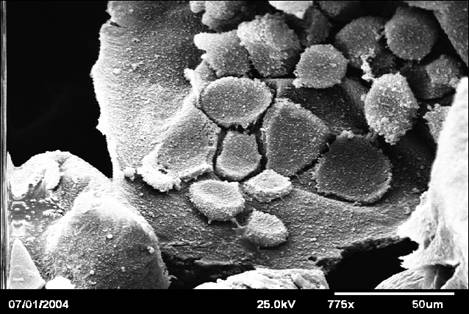Biodegradable Porous Scaffolds
 The Virus Research Group is developing a number of novel systems for the study of human hepatitis viruses. One such system is based on the use of biodegradable porous scaffolds to model human liver.
The Virus Research Group is developing a number of novel systems for the study of human hepatitis viruses. One such system is based on the use of biodegradable porous scaffolds to model human liver.
The use of porous biodegradable scaffolds. Supercritical CO2 mixing is used to generate porous scaffolds from PDLLA. Human liver cells can then be engineered onto complex scaffolds with nutrient channels. This approach permits the spatial arrangement of cells in a manner which is more closely related to liver architecture in vivo and restores position-dependent metabolic processes. The use of such micro-scaffolds is associated with significantly enhanced hepatocyte longevity and function and is an important step towards more complex models of human liver for use in studies of viral pathogenesis.